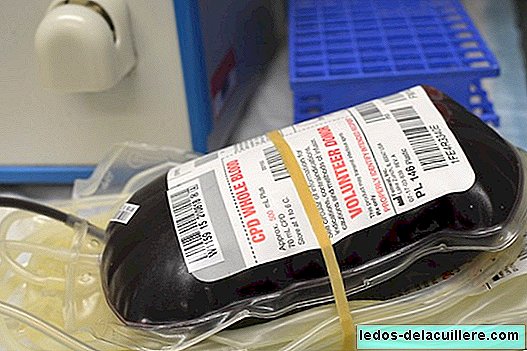
Every four minutes a child dies prematurely on some road in the world. Other hundreds suffer trauma, many of them serious.
With these shocking data, a document prepared by WHO begins to raise awareness about the importance of controlling road safety and legislating to avoid thousands of deaths of children a year.
In it, they show us strategies to improve the safety of children on the roads. The organization calls for rigorous legislation and its strict application, which, together with the strengthening of the safety of roads and vehicles, would improve the situation.
The problem is not small: road traffic injuries are among the four leading causes of death for all children over the age of five. And although it is worldwide, the children most exposed to death in a traffic accident are those who live in low and middle-income countries.
Let's see what are the ten strategies that, carried out as a set of measures, could preserve the safety of children on the roads and we refer you to this infographic that summarizes them.

Speed control. The reduction of vehicle speed is essential to protect children on the roads. Therefore, appropriate speed limits must be established and enforced depending on each road; establish and enforce a maximum speed limit of 30 km per hour on roads with high concentrations of pedestrians; enforce speed limits by using automatic speed detection cameras; build or modify roads to provide them with characteristics that limit speed (traffic lights, roundabouts and sidewalks).
Driving prevention under the influence of alcohol. One of the main risks for children such as pedestrians, cyclists and passengers in vehicles. The limits of 0.05 g / dl or less must be established and enforced for all drivers, and lower limits of 0.02 g / dl or less for young drivers; enforce the rules on driving under the influence of alcohol through checkpoints and random breath tests; restrict the sale of alcohol by means of rules that set a minimum age, regulate the types of establishments authorized to sell alcohol and set their operating hours; Limit the sale of alcoholic beverages to children.
Use of the helmet by cyclists and motorcyclists. For children, the use of the helmet is the most effective individual strategy to reduce the risk of head trauma when riding bicycles or motorcycles. The rules on the use of the helmet must be enforced and enforced by motorcyclists. Introduce internationally recognized helmet manufacturing criteria, to ensure that they are appropriate for children. Ensure the availability and affordability of helmets for those who need them; support community initiatives aimed at children by raising their parents' awareness of motorcycle and bicycle helmets, and providing free or cheap helmets for children.
Protection of children in vehicles. Laws on safety devices for children must be imposed and enforced in all private vehicles; introduce internationally recognized criteria in the manufacture of child protection devices; ensure the availability and affordability of these devices for those who need them; force vehicle manufacturers to equip all private vehicles with direct moorings for child traffic accident seats, for example, ISOFIX anchoring systems to secure the protection devices in place; promote loan plans for the acquisition of devices and inform families about their use.
Improve the sight and visibility of children. Wear clear clothes; use retroreflective tapes on clothing or in items such as backpacks; form “pedestrian buses” in which adult volunteers accompany established routes to groups of children with retro-reflective vests; hire guards with retro-reflective vests to monitor crossings around schools; use front lights on bicycles, as well as front, rear and wheel reflective parts; use daytime lights on motorcycles and vehicles; Ensure that the streets are as clear as possible and improve their lighting.

Road infrastructure improvement. It is necessary to install physical elements such as traffic lights, roundabouts, sidewalks, crosswalks, overpasses, central sidewalk and public lighting on busy roads; separate the various types of transport and road users through mechanisms such as high levels and lanes exclusive for pedestrians and cyclists; create pedestrian areas to improve your safety; establish school safety zones that include a set of speed reduction measures, pedestrian zones, safe points of ascent and descent of passengers and monitored crossings; increase the time of pedestrian crossing at signposted intersections near schools; delimit recreational areas for children away from roads; Invest in safe public transportation.
Adaptation of vehicle design. The installation of impact absorption zones in vehicles must be required to protect passengers in the event of an accident; redesign the front parts of vehicles in order to make them less dangerous for pedestrians; equip vehicles with cameras and audible alarms that can detect small objects lost through the rearview mirror; install alcohol detection blocking systems in the vehicles of people convicted of driving under the influence of alcohol.
Risk reduction for young drivers. In places where there are programs to gradually obtain a driver's license, traffic accidents among this group have decreased by 46%. Then, blood alcohol levels for novice drivers should be reduced; driving with a responsible adult for a stipulated period of learning time; restrict night driving and the number of accompanying passengers; insist on zero tolerance against any lack of traffic, including text messages while driving.
Provide adequate care to children with trauma, including specific considerations for them. Caregivers and teachers must be trained so that they can safely and immediately stabilize children with trauma; train hospital care providers regarding physiological differences between children and adults; provide emergency vehicles with medical equipment and adequate supplies for children; make hospital settings as enjoyable for children as possible, in order to minimize the additional trauma of children with trauma; improve pediatric rehabilitation services and include access to community rehabilitation centers; improve access to counseling services to mitigate the psychological effects of traffic accident injuries on children and their families, and address practical considerations (legislative and financial).
Watch children in the vicinity of roads. While the above strategies require financial outlay (hence the difficulty of introducing them in developing countries), this time appeals to the attention of parents and caregivers, who should not lose sight of children. In addition, they are also responsible for ensuring the application of some previous measures (helmet use, restraint systems ...) and claiming the authorities.
According to WHO, if all countries apply the ten strategies to protect children on the road It would greatly contribute to the achievement of the objective of the Decade of Action for Road Safety 2011-2020 consisting of saving five million lives. Later we will talk about this Decade of Action and hopefully your goals will be achieved.
Photos | iStock
Via | WHO
In Babies and more | Decalogue of road safety in nursery schools, do we do everything possible to save them? Children's declaration for road safety












